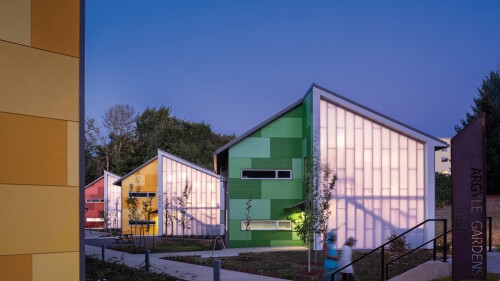Topics
Capital Markets and Finance
During the “Capital Markets: Raising Equity Today” discussion at ULI’s 2025 Spring Meeting in Denver, Colorado, a panel of industry experts and capital providers—moderated by Faron A. Hill, president of Peregrine Oak—shared their insights with a standing-room-only crowd on what they’re looking for in an equity partner—and what makes them walk away from deals.
The hotel industry in the United States faces complex challenges in 2025, according to Jan Freitag, national director of hospitality analytics for the CoStar Group. During the “State of the U.S. Hotel Industry” presentation at the ULI 2025 Spring Meeting in Denver, Colorado, Freitag highlighted the challenges facing the hotel business amid macroeconomic uncertainty.
Capital is widely available for real estate borrowers, and lenders are eager to do business. This takeaway was a key theme from a panel discussion held at the 2025 ULI Spring Meeting in Denver, Colorado.
Design & Planning
10 inventive designs put housing within reach of low- and moderate-income individuals and families
As it contends with the same post-pandemic challenges that confront other urban cores nationwide, downtown Denver is leveraging public/private partnerships to bring back vitality. At the ULI 2025 Spring Meeting in Denver, Colorado, five leaders involved with the city’s revitalization shared recent successes and plans for Denver’s future.
Becoming an architect was always the goal for ULI Global Chair Diane Hoskins. “I’ve always loved buildings,” she said during the WLI Americas Presents a View from the Top session at the ULI 2025 Spring Meeting in Denver, Colorado, where she was interviewed by Emma West, partner at Bousfields Inc. and ULI Chair of the Women’s Leadership Initiative’s Americas Executive Committee.
Development and Construction
At the ULI Spring Meeting 2025 session “Mastering Innovation: Tech-Driven Transformation of Planned Communities,” two prominent community developers—Laura Cole, senior vice president at Lakewood Ranch, and Fred Balda, president of Hillwood Communities—discussed how digital tools and data are reshaping large-scale developments. Moderated by Cecilian Partners’ Philip Worland, the conversation highlighted the role of technology in revolutionizing both front-end and back-end operations in the master-planned community (MPC) sector.
Zed Smith is the chief operating officer for The Cordish Companies. In that capacity—now for almost a decade—Smith oversees all aspects of the company’s operating properties portfolio, which includes numerous high-profile entertainment, mixed-use, and sports-anchored developments located in urban communities nationwide. Many of those developments have been transformative, thanks to their economic and cultural impact.
At the 2025 ULI Asia Pacific Summit—May 26–29, in Hong Kong—a panel of Asian economic and geopolitical experts addressed one of today’s most immediate global concerns: the implications of U.S.–China economic decoupling and the broader geopolitical shifts reshaping global trade and investment.
Resilience and Sustainability
Despite geopolitical headwinds, green building regulations continue to gain momentum among local authorities. Many cities have moved beyond reporting requirements to demand practical, asset-level action. Numerous jurisdictions have introduced requirements on net-zero carbon and energy efficiency in buildings, fossil fuel-free heating, embodied carbon, electric vehicle (EV) charging facilities, and climate adaptation measures.
Since the 1980s, the Dallas suburb of Plano has attracted some of the country’s biggest corporate headquarters and established itself as a hub for major employers. But how did Plano revamp to meet the goals of a changing economy and a changing community? The city made a pivot that has been echoed in growing cities around the country: a major shift toward investing in parks and activating green space.
ULI is proud to announce partnerships with seven public agencies in California and Nevada that are working to advance resilience in urban planning and real estate development in their communities. The organizations are partnering with their local ULI District Councils as part of a larger effort aimed at connecting public sector leaders to ULI’s technical assistance, networks, and other resources and helping cities prepare for the impacts of climate change and other environmental vulnerabilities.
Issues and Trends
At the 2025 ULI Asia Pacific Summit, a distinguished panel of industry leaders convened to dissect what the rise of artificial intelligence means for the sector and how organizations can harness its potential. Their debate spanned the frenetic growth of data centers, the journey of AI adoption, and seismic shifts afoot for the built environment and the workforce.
We hope everyone is looking forward to warm-weather activities as summer has begun at ULI HQ in Washington, D.C. In case you missed it, we wanted to share the articles that resonated with the most readers in the first half of 2025.
The Johns Hopkins Institute for Planetary Health is poised to host the inaugural event of the 2025 Planetary Health Cities Symposium in Washington, D.C., on June 16. This event aims to address the urgent challenges posed by the degradation of Earth’s natural systems and the impact on human health and well-being. (















